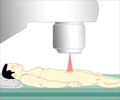According to results appropriately dosed hypofractionated radiotherapy was gentle on healthy tissues and effective in controlling local-regional early breast cancer.

Between 1999 and 2002, 4,451 women with completely excised invasive breast cancer were recruited to either the START A or START B randomized controlled trials. In START A, researchers compared 50 Gy of postsurgery radiotherapy given in 25 fractions for five weeks versus 41.6 Gy or 39 Gy in 13 fractions for five weeks. In START B, they compared 50 Gy in 25 fractions for five weeks versus 40 Gy in 15 fractions for three weeks.
Data revealed 139 local-regional tumor relapses among the 2,236 women in START A who were followed for an average of 9.3 years and 95 local-regional relapses in the 2,215 women in START B, followed for an average of 9.9 years.
The 10-year local-regional relapse rates for START A were 7.4 percent after 50 Gy, 6.3 percent after 41.6 Gy and 8.8 percent after 39 Gy. In previously published data from START B, the 10-year local-regional relapse rate was 5.5 percent after 50 Gy and 4.3 percent after 40 Gy.
"These long-term data from the START A trial confirm the findings of our earlier results that breast cancer is, on average, as sensitive to the radiation dose of each fraction as the dose-limiting normal tissues of the breast area and that this effect persists for at least 10 years," Yarnold said.
However, a five-week, 13-fraction schedule does not offer shortened overall treatment times. "Hence, we also designed the START B trial, a pragmatic comparison of three-week and standard five-week schedules, testing for noninferiority," said Yarnold. "The 15-fraction schedule is definitely gentler on the healthy tissues, and these long-term data confirm our earlier findings that it appears noninferior in terms of tumor control - a very favorable result."
Advertisement
"It is likely that some breast cancers are more or less sensitive than others," Yarnold said. "We are also testing a one-week schedule of whole breast radiotherapy against our new three-week standard in the U.K. FAST-Forward Trial."
Advertisement
Source-Newswise















